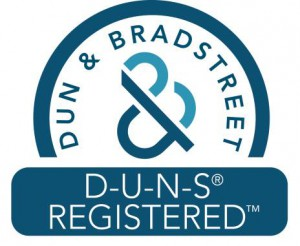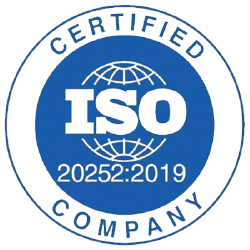Página actualizada :
Jul 2025
INTRODUCCIÓN AL MERCADO Las soluciones de software de administración de escritorio ayudan a las empresas a administrar espacios de trabajo de un solo monitor o de varios monitores con fácil acceso, alta flexibilidad y más control sobre los dispositivos de escritorio. Este software actúa como un componente de gestión del sistema que monitorea y gestiona todos los componentes de los sistemas de información presentes en una organización. Por lo tanto, estas soluciones satisfacen los requisitos tanto de movilidad como de flexibilidad de las empresas. Se prevé que las soluciones basadas en la nube sean el segmento de más rápido crecimiento en este mercado debido a ventajas como la alta escalabilidad, la fácil implementación, la seguridad mejorada y la asequibilidad. DINÁMICA DEL MERCADO La tendencia creciente de la transformación digital y el entorno de trabajo remoto entre las industrias de todo el mundo está impulsando la demanda del mercado de software de gestión de escritorio. Sin embargo, la falta de conocimiento y disponibilidad de soluciones de software libre pueden actuar como factores que obstaculizan el crecimiento del mercado. A pesar de algunos factores limitantes, la creciente adopción de soluciones basadas en la nube entre grandes, pequeñas y medianas empresas, junto con la llegada de 5G, son algunos de los factores que se espera que ofrezcan amplias oportunidades de crecimiento para los actores del mercado. ÁMBITO DEL MERCADO El "Análisis del mercado global de software de gestión de escritorio hasta 2031" es un estudio especializado y en profundidad con un enfoque especial en el análisis de tendencias del mercado global. El informe de mercado de software de gestión de escritorio tiene como objetivo proporcionar una descripción general del mercado de software de gestión de escritorio con una segmentación detallada del mercado por implementación, tamaño de empresa y geografía. Se espera que el mercado mundial de software de gestión de escritorio experimente un alto crecimiento durante el período de pronóstico. El informe proporciona estadísticas clave sobre el estado del mercado de los principales actores del mercado de software de gestión de escritorio y ofrece tendencias y oportunidades clave en el mercado. SEGMENTACIÓN DEL MERCADO El mercado global de software de administración de escritorios está segmentado según la implementación y el tamaño de la empresa. Según la implementación, el mercado de software de gestión de escritorio se segmenta en: nube y local. Según el tamaño de la empresa, el mercado de software de gestión de escritorio se segmenta en: pequeñas y medianas empresas y grandes empresas. MARCO REGIONAL El informe proporciona una descripción detallada de la industria que incluye información tanto cualitativa como cuantitativa. Proporciona una descripción general y un pronóstico del mercado global de software de gestión de escritorio en función de varios segmentos. También proporciona el tamaño del mercado y estimaciones de pronóstico para el año 2021 al 2031 con respecto a cinco regiones principales, a saber; América del Norte, Europa, Asia-Pacífico (APAC), Medio Oriente y África (MEA) y América del Sur y Central. El mercado de software de gestión de escritorio de cada región se subsegmenta posteriormente en los respectivos países y segmentos. El informe cubre el análisis y pronóstico de 18 países a nivel mundial junto con las tendencias y oportunidades actuales que prevalecen en varias regiones. El informe analiza los factores que afectan el mercado de software de gestión de escritorio tanto desde el lado de la demanda como de la oferta y evalúa en mayor profundidad la dinámica del mercado que afecta al mercado durante el período de pronóstico, es decir, impulsores, restricciones, oportunidades y tendencias futuras. El informe también proporciona un análisis PEST exhaustivo para las cinco regiones, a saber; América del Norte, Europa, APAC, MEA y América del Sur y Central después de evaluar los factores políticos, económicos, sociales y tecnológicos que afectan el mercado de software de gestión de escritorio en estas regiones. ACTORES DEL MERCADO Los informes cubren desarrollos clave en el mercado de software de administración de escritorio como estrategias de crecimiento orgánico e inorgánico. Varias empresas se están centrando en estrategias de crecimiento orgánico como lanzamientos de productos, aprobaciones de productos y otros como patentes y eventos. Las actividades de estrategias de crecimiento inorgánico observadas en el mercado fueron adquisiciones, asociaciones y colaboraciones. Estas actividades han allanado el camino para la expansión de los negocios y la base de clientes de los actores del mercado. Se prevé que los actores del mercado de software de gestión de escritorio tendrán lucrativas oportunidades de crecimiento en el futuro. A continuación se menciona la lista de algunas empresas involucradas en el mercado de software de administración de escritorio. El informe también incluye los perfiles de empresas clave junto con su análisis FODA y estrategias de mercado en el mercado de software de gestión de escritorio. Además, el informe se centra en los principales actores de la industria con información como perfiles de empresas, componentes y servicios ofrecidos, información financiera de los últimos 3 años, el desarrollo clave en los últimos cinco años.
- • baramundi software AG • Broadcom • Devoluciones • Corporación Faronics • Ivanti • Kaseya Limited • Corporación NVIDIA • Quest Software Inc. • Implementación inteligente • Zoho Corporation BV (Desktop Central)
- Análisis histórico (2 años), año base, pronóstico (7 años) con CAGR
- Análisis PEST y FODA
- Tamaño del mercado, valor/volumen: global, regional y nacional
- Industria y panorama competitivo
- Conjunto de datos de Excel
Informes recientes
Informes relacionados
Mercado de sistemas de gestión de respuesta a la demanda
Mercado de software de gestión de la construcción
Mercado de sistemas de gestión de bases de datos
Mercado de gestión de activos de centros de datos
Mercado de gestión del ciclo de vida de los contratos
Mercado de Gestión de la Experiencia del Cliente
Mercado de gestión de infraestructura de centros de datos
Mercado de Gestión de Comunicaciones con el Cliente
Mercado de sistemas de gestión de correspondencia
Mercado de software de gestión de mensajería
Mercado de software de gestión de contratos
Mercado de software de gestión de consultorios dentales
Mercado de software de gestión de entregas
Mercado de plataformas de gestión creativa
Mercado de herramientas de gestión de defectos
Mercado de gestión de relaciones con los clientes
Mercado de sistemas de gestión de contenidos
Mercado de sistemas de gestión de terminales de contenedores
Mercado de software de gestión de contactos
Mercado de software de gestión de proyectos de construcción
Testimonios
Razón para comprar
- Toma de decisiones informada
- Comprensión de la dinámica del mercado
- Análisis competitivo
- Información sobre clientes
- Pronósticos del mercado
- Mitigación de riesgos
- Planificación estratégica
- Justificación de la inversión
- Identificación de mercados emergentes
- Mejora de las estrategias de marketing
- Impulso de la eficiencia operativa
- Alineación con las tendencias regulatorias
Nuestros Clientes






























Asistencia de ventas
US: +1-646-491-9876
UK: +44-20-8125-4005
Email: sales@theinsightpartners.com
Chatea con nosotros

87-673-9708

ISO 9001:2015





 Obtenga una muestra gratuita para - Mercado de software de gestión de escritorio
Obtenga una muestra gratuita para - Mercado de software de gestión de escritorio